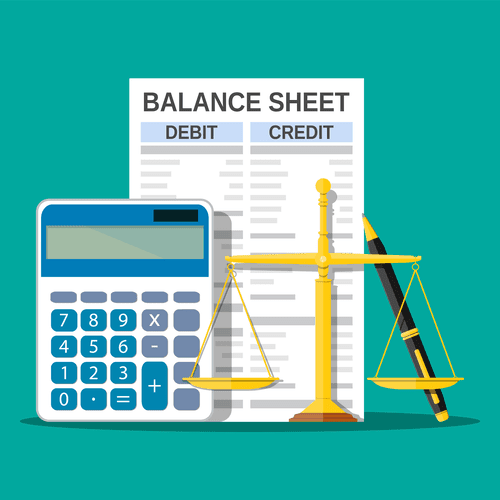
Even with intangible goods, you wouldn’t want to expense the cost a patent the very first year since it offers benefit to the business for years to come. Thats why the costs of gaining assets throughout the years are significant because the company can continue to use it or create revenue from it. The account created for accumulated depreciation is a compensatory one which decreases the fixed assets account. Unlike other accounts, this one continues to increase until after the asset has been written off, sold, or fully depreciated. Firms must account for amortization as stipulated in major accounting standards.
What is Amortization Expense?

Amortization is a non-cash expense, meaning it reduces the company’s taxable income without affecting cash flow. By spreading out the amortization expense, businesses can benefit from tax deductions annually instead of all at once. From the perspective of a CFO, an amortization schedule is a tool for balancing financial obligations with operational cash flow. It helps in aligning debt repayment with revenue cycles, ensuring that the company does not face liquidity issues. For a loan officer, it’s a document that reflects the borrower’s ability to repay, shaping the terms of the loan agreement. And for an investor, it offers insights into a company’s debt structure, influencing investment decisions.
How long do you amortize intangible assets?
Amortization is a critical accounting process that has a profound impact on asset valuation. It affects financial statements, tax calculations, investment analysis, and the perceived efficiency of a company. Understanding the nuances of accumulated amortization is amortization is essential for stakeholders to make informed decisions regarding the financial health and potential of a business. Accumulated amortization is a testament to the transient nature of intangible assets and their diminishing contribution to a company’s financial performance.
The Future of Accumulated Amortization in Accounting Practices

They empower stakeholders to make informed decisions, manage assets effectively, and plan for a stable financial future. Whether you’re a business owner, a financial professional, or a consumer with a mortgage, understanding and utilizing these schedules can lead to significant long-term benefits. Amortization is the way accountants assign the period concept in financial statements based on accrual.
- Account of amortization expense is to be debited, while accumulated amortization is to be credited.
- A rule of thumb on this is to amortize an asset over time if the benefits from it will be realized over a period of several years (or longer).
- Instead, a certain amount of money is always set aside to capitalize on the assets, resulting in what is known as accumulated amortization.
- It is recorded as a contra asset account on the balance sheet; therefore, it is listed below the line item for unamortized intangible assets.
- The patent has a finite life, say 15 years, and the company amortizes the cost over this period.
First, calculate the annual amortization by dividing the intangible asset’s cost by its useful life. If the software costs $10,000 and has a 5-year life, the annual amortization is $2,000. Next, estimate the salvage value (residual value) of the intangible asset at the end of its useful life. For intangible assets, this value is often considered zero because most intangible assets do not have a resale value after their useful life expires. Accumulated amortization affects a company’s earnings before interest, taxes, depreciation, and amortization (EBITDA). Since amortization expenses reduce net income, they also lower the EBITDA, which is a commonly used metric for assessing a company’s operating performance.

This accounting treatment ensures that the expense is matched to the revenues generated by the franchise. Thomson Reuters Fixed Assets CS has the tools to help firms meet all of a client’s asset management needs. Given that amortization and depreciation are both deductible from taxes as business expenses, they can prove very beneficial for business clients.
How to Calculate Loan Amortization
- In order to secure the tax deduction, a company must follow the IRS rules while depreciating their assets.
- It’s a testament to the prudence principle in accounting, ensuring that expenses are recorded in the period they are incurred, not when the cash is paid.
- Non-current assets, on the other hand, are long-term investments that are not easily converted into cash within a year.
- With so many variables and inferences involved with determining amortization and the life expectancy of an intangible asset, impairment cost can be used to manipulate the balance sheet.
- This is particularly important for assets such as patents, copyrights, and software, which provide value over a specific period.
- Record the accumulated amortization of assets directly against the total asset account, much like you would write off the accumulated depreciation as Contra Asset Account in the actual account balance.
This systematic allocation not only reflects the consumption of the asset’s economic benefits but also helps businesses and individuals understand the true cost of assets and liabilities over time. By doing so, amortization provides a clearer financial picture and aids in the decision-making process regarding investments and loans. Accumulated amortization is not just a mechanical calculation but a reflection of retained earnings an asset’s consumption and its diminishing contribution to a company’s value. Understanding its impact on asset valuation is essential for accurate financial reporting, strategic tax planning, and informed investment decisions. It’s a testament to the temporal nature of intangible assets and the importance of managing them wisely over their lifecycle.
The Impact of Amortization on Asset Valuation
This is because it is subtracted from the original cost of the asset to arrive at its net book value. The same concept applies for depreciation expense, which is a portion of a fixed asset that has been considered consumed in the current period and is then charged as a non-cash expense. The above balance sheet extract shows 200,000 amortization expenses written-off from the amount of computer software for the period Jan-Dec 20×1. The balance of 800,000 will be proportionately written off in the next Bookkeeping for Etsy Sellers 4 years.
This expense will continue to be part of the balance sheet till 2029 post, which is completely amortized. Modern accounting software simplifies the process of recording and managing amortization. However, it will be amortized at the end of each year for 5 years on a straight-line basis ie. 200,000 will be recorded as an expense and will be written off from the amount of software each year for 5 consecutive years. Another catch is that businesses cannot selectively apply amortization to goodwill arising from just specific acquisitions. The patent has a legal life of 20 years, but due to the fast-paced nature of technological advancement, the company estimates the patent will only be valuable for 10 years.